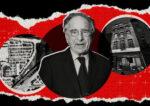Trending
More competitive than cautious
Brokers say the post–Labor Day bump in listings didn’t materialize and that the tight market is trending in favor of sellers

 If a year ago the watchword for buyers was cautious, this October a better term might be competitive.
If a year ago the watchword for buyers was cautious, this October a better term might be competitive.
In the third quarter of this year, sales of Manhattan condominiums and co-ops rose 11.5 percent, to 2,952 transactions from 2,647, compared to the previous quarter, according to a market report prepared by appraisal firm Miller Samuel for Prudential Douglas Elliman.
The median sale price increased 7.4 percent, to $890,000 from $829,000, in the same span — thanks largely to a whopping 45.4 percent increase in the median price of new development units, to $1.49 million, the data show.
However, year-over-year indicators fell: Transactions were down 5 percent and the median sale price dropped 2.3 percent, the report says.
“What I think is particularly interesting, and a strong indicator of the legs of the market, is that sales volume continues to grow as inventory declines,” said Justin D’Adamo, a managing director at the Corcoran Sunshine Marketing Group. “This is a good indicator for the market going forward.”
In other words, the increase in sales is not simply the result of additional units flooding the market. In fact, it continues to be quite the opposite.
“The post–Labor Day bump in new listings that we all expected was largely disappointing, as it hasn’t resulted in a significant rebalancing of supply and demand — that has been skewed in favor of sellers for the preceding two quarters,” said Kate Akerly, an agent at Rutenberg Realty.
In desirable neighborhoods such as the West Village and Park Slope, “multiple offers are close to becoming the norm,” said Bruno Navarro, an agent at Bond New York.
Recently, Akerly said she witnessed a “handful” of deals fall through after sellers retracted accepted offers, following “one more open house” that generated additional bids. Meanwhile, listings that have been on the market for five or six months are seeing renewed interest, she said, even though sellers have made only minor changes, such as removing exterior scaffolding.
As fall got underway, buyers — particularly parents investing for adult children who are young professionals or college students — directed their attention to studios and one-bedrooms, making the entry-level apartment the hottest segment of the market, brokers said.
One-bedroom sales surged — to 37.8 percent of the Manhattan market, compared to 32.8 percent of the market a year ago; meanwhile, two-bedroom sales made up only 31 percent of the market in the third quarter, down from 38.7 percent in the same period last year, the Elliman report says.
“After the slowdown of the summer, we are … seeing many first-time homebuyers come to market and start actively hunting,” said Daniel Hedaya, president of Platinum Properties, noting that the high-end market also continues to be strong.
On the Upper West Side, D’Adamo observed a “strong uptick” in parents buying for college-bound children starting at nearby Columbia University and Fordham University.
“They save on paying rent for their kids — which gets them zero return on investment — and they get to invest in New York real estate at historically low costs,” Navarro said. “It’s a win-win for them. New York’s supply of studios and one-bedroom apartments makes it such a good idea that parents are really starting to notice.”
Mark Ski, vice president of sales at Bond, is noticing what is sometimes called “the property ladder effect,” where owners are able to upgrade into pricier housing. For example, mid-range one-bedroom owners are now buying higher-end apartments, allowing studio owners to move into one-bedrooms and first-time buyers to get out of the rental market, he said.
However, Akerly said that she is seeing first-time homebuyers — “extremely active” in the market for homes priced under $600,000 — passing over studios to buy one-bedrooms.
Part of the reason (which has been the case for the past several years) is low mortgage rates, which show no signs of rising. Last month, Ben Bernanke, the chair of the Federal Reserve, outlined a plan for a third round of quantitative easing, which will effectively keep interest rates near rock-bottom levels until mid-2015.
Brokers are now looking ahead to the next big date on the real estate calendar: the Nov. 6 election. (See “How the election will change NYC real estate.”)
While brokers acknowledged that the Manhattan housing market is less directly impacted by the occupant of the White House than it is by broader economic trends, they said that doubt about who would win the presidential election is keeping some buyers and sellers on the fence.
Indeed, 25 percent of Americans said they would delay — or would consider delaying — a home purchase until after the election, according to a poll conducted last month by market research giant Harris Interactive. Just over half of respondents said the election would not affect their decision.
“The election itself will have a positive effect on the market just because it will be over with,” Corcoran Sunshine’s D’Adamo said. “It is the uncertainty that doesn’t help the market.”
Navarro added: “Once the uncertainty of who’ll occupy the White House evaporates, equity markets will continue their gains and spur an increase in sales transactions — in New York first, and more so than in any other U.S. market.”




